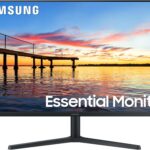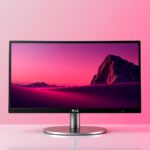Introduction
Have you ever noticed strange lines or weird patterns on your computer screen? These issues can sometimes be caused by something called pixel walk and pixel inversion. In this article, we will explore what these terms mean and why they are important for anyone who uses a computer, video game console, or television. Understanding these concepts can help us enjoy a better viewing experience and avoid annoying visual problems.
I have spent many years learning about display technology, and I want to share some of that knowledge with you. By the end of this article, you will have a better understanding of pixel walk and pixel inversion, as well as tips for dealing with any issues that may arise.
What Causes Pixel Walk?
To understand pixel walk, we need to talk about how screens work. Most screens use tiny dots called pixels to create images. Each pixel can change color by using electricity. When the screen displays an image, it sends either a positive or negative electrical charge to each pixel.
Sometimes, the screen needs to change the charge on a pixel from positive to negative or vice versa. This switch in electrical charge is called polarity inversion. It is very important because it helps to prevent a problem known as burn-in, where a static image gets stuck on the screen and can be seen even when the image changes.
However, switching the charge on pixels can sometimes lead to visual problems. When pixels are switched too quickly or not accurately, it can result in what we call pixel walk, where the image appears to move or jump in an unexpected way.
Visual Artifacts Explained
When pixel walk happens, you might notice some visual artifacts on your screen. These are unusual patterns or distortions that can make your viewing experience less enjoyable. Here are some common artifacts you might see:
- Interlacing Patterns: This looks like lines crisscrossing the image, creating a checkerboard effect.
- Vertical Lines: Sometimes, you might see straight lines running up and down the screen that shouldn’t be there.
- Scan Lines: These are thin horizontal lines that can appear across the image, making it look like a TV from the past.
- Checkerboard, Mesh, or Grid Effects: This looks like a grid overlay on the screen, disrupting the images.
- Color Distortion: The colors might not look right, and some colors may appear more vibrant or dull than they should.
The visibility of these artifacts can change depending on the type of monitor you are using and the type of content you are watching. For example, static images (like a picture or a paused video) might show artifacts more than dynamic content (like a fast-moving video game).
Monitor-Specific Behavior
Interestingly, even the same model of monitor can show different artifacts! This means that two people using the same monitor might experience pixel walk differently. Here are a few reasons why this happens:
- Unit Variability: Different monitors can have slight differences in how they are built or calibrated, which can affect how they display images.
- Content Type: The type of content you’re viewing also matters. Static images may highlight artifacts more than videos, which constantly change.
- Prone Monitors: Some monitors are more likely to show pixel walk than others. For example, high refresh rate displays (those that update the image more often) and some Samsung VA panels are known to have issues.
How to Test for Pixel Walk
If you think your monitor might be experiencing pixel walk, there are ways to test it out. Here are some resources to help you:
- Blur Busters: This is a website that provides tools and tests for checking monitor performance. You can find tests specifically designed to check for artifacts like pixel walk.
Caution: If you are sensitive to flickering lights, you should be careful when testing your monitor because some tests might cause flickering that can be uncomfortable or even trigger headaches.
Also, keep in mind that testing can sometimes have a psychological effect. If you’re looking for problems, you might start to see them everywhere, so be mindful of what you notice!
Solutions for Pixel Walk
If you find that your monitor is showing pixel walk artifacts, don’t worry! There are several tips you can try to help reduce or eliminate these issues:
- Adjust Brightness and Sharpness: Sometimes, simply tweaking the brightness and sharpness settings on your monitor can make a difference.
- Change Screen Resolution: Experimenting with different screen resolutions and rebooting your graphics drivers can help clear up issues.
- Reduce Refresh Rate: If your monitor is overclocked (running faster than its normal speed), try lowering the refresh rate to see if that helps.
- Turn Off Backlight Strobing: Some monitors have a Motion Blur Reduction feature that can cause pixel walk. Turning this off may help.
- Adjust Response Time Overdrive Settings: This setting controls how quickly pixels change color. Tweaking it can help reduce artifacts.
- Allow the Monitor to Warm Up: Sometimes, letting your monitor warm up for a little while can improve performance.
- Sit Farther Away: If you’re too close to the screen, moving back a bit could lessen the visibility of artifacts.
Similar Artifacts: Confusing Factors
In addition to pixel walk and pixel inversion, there are other visual artifacts that can confuse the issue. Here are a couple to keep in mind:
- Frame Rate Control (FRC): This technology helps displays show more colors, but it can sometimes create problems with color representation. You might notice unexpected color changes or banding.
- Response Time Overdrive: This adjustment can improve how quickly pixels change, but it can also create artifacts if set too aggressively. Finding a good balance is key.
If you want to test and optimize your overdrive settings, consider seeking out online guides or forums that focus on display performance. There are many resources available to help you find the right settings for your monitor.
Conclusion
In summary, understanding pixel walk and pixel inversion is essential for anyone who wants to enjoy a great viewing experience on their monitors. We’ve discussed what causes these phenomena, the visual artifacts they can create, how to test for them, and solutions to improve your display.
By being aware of these issues and knowing how to address them, you can enhance your experience whether you’re gaming, watching movies, or browsing the internet. Remember, the right settings and adjustments can make a significant difference in how your monitor performs.
If you’re interested in learning more, I encourage you to explore additional resources about monitor technology. You can find links to related articles below to dive deeper into topics like response time, pixel density, and more.
Other Related Articles
- Eizo Foris FS2331 Review
- How Much Power Does a 144Hz Monitor Use? A Deep Dive into Energy Consumption
- Should I Turn On HDR for Gaming? A Comprehensive Guide
- Is iPhone 16 Pro OLED the Best Display Yet?
- Understanding Panel Variance: What It Means for Your Monitor Purchase
- Can You Throw Computer Monitors in the Trash? The Ultimate Guide to Eco-Friendly Disposal
- Understanding VESA ClearMR: The Future of Motion Clarity in Displays
- 4K vs 1080p – Is UHD Worth The Upgrade?
- How To Choose The Right Gaming Monitor: A Comprehensive Guide
- IPS vs OLED Monitors for Color Accuracy: The Ultimate Showdown
- HDMI 2.1: The Future of Home Entertainment and Gaming
- How to Connect Heart Rate Monitor to PC?
- Curved vs Flat TV – Which Should You Choose? The Ultimate Showdown for 2025
- Can You Connect M-Audio Monitors to PC?
- Why Is My PC Showing the Same Display on Two Monitors?
- Why Are Computer Monitors More Expensive Than TVs?
- The Best Flicker-Free Monitors for Eye Care
- Monitors for Mac vs Windows PCs: The Ultimate Showdown
- 1920×1080 vs 2560×1440 – Which One Should I Choose?
- 99219444 Toshiba and Its Revolutionary Features for Tomorrow’s Tech Landscape
- OLED vs QD-OLED: The Showdown of Display Technologies
- What Is DisplayPort 2.1?
- What Is The Best Monitor Size For Gaming?
- 720p vs 1080p vs 1440p vs 4K vs 8K – Which Should I Choose?
- Is An HDR Gaming Monitor Worth It?
- Mini-LED vs MicroLED: What’s the Difference?
- Do Pawn Shops Take Computer Monitors?
- What LG Computer Monitor is as Good as the C3?
- Understanding Pixel Walk and Pixel Inversion
- Curved vs Flat Monitors for Work: Which One is Right for You?
- What Is The Soap Opera Effect?
- 4K vs 1440p Monitors for Video Editing: Which One Should You Choose?
- Do I Have to Attach a Hood to My BenQ Monitor?
- Can You Use Mac as a Monitor for PC?
- What Is G-SYNC And What Does It Do?
- Daz Studios Summoner G8 for the Visionary Artist
- Dell vs HP Monitors for Gaming
- Understanding IPS Technology: A Comprehensive Guide
- 27-Inch Monitors vs 32-Inch Monitors for Productivity
- Understanding Screen Resolution: Why It Matters for Your Displays
- How to Transport Computer Monitors?
- How to Dispose of Computer Monitors?
- What Is 4K Resolution And Is It Worth It?
- How to Pack Computer Monitor for Moving?
- What Is HDR For TVs And Is It Worth It?
- 1440p or 144Hz – Which Is Best For You?
- USB Type-C Explained – Everything You Need To Know
- Samsung’s Exciting Journey into Glasses-Free 3D Displays at Gamescom 2024
- I Have A Problem with My Samsung Odyssey G3 Monitor Setup
- Is A 144Hz Monitor Worth It? A Comprehensive Guide
- Understanding FALD Blooming and the Halo Effect: A Deep Dive
- What Does 144Hz Mean? Understanding Refresh Rates in Simple Terms
- Is an UltraWide Monitor the Right Choice for You?
- Active vs Passive 3D – What’s The Difference?
- Understanding Glare Control in Luminaires for Computer Users
- Why Does My Acer Monitor Keep Going Black?
- Understanding Motion Blur Reduction: A Gamer’s Guide
- How to Connect Studio Monitors to PC?
- Misleading Monitor Specifications You Should Look Out For
- QLED vs OLED – Which Is Best?
- Understanding VESA AdaptiveSync and MediaSync: The Future of Display Technology



